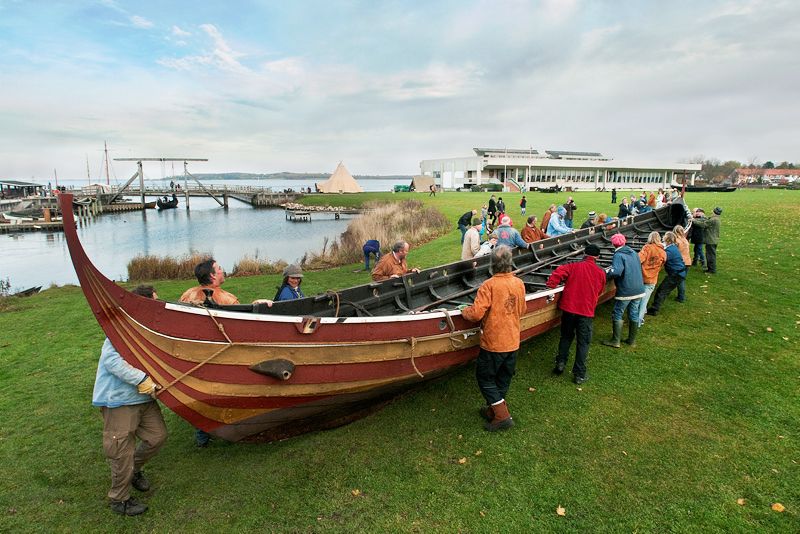
Ships over land
Thanks to their low-profile keels, warships could sail right onto a beach, and a large crew could drag their ship across land, thereby shortening travelling times and routes.
Some Danish place-names include the word 'drag', which, means to draw or pull. The place-names often occur near strips of narrow, low-lying land between two waterways. They mark the places of portage, where Vikings dragged their ships over land.
Portages can also be traced in foreign sources. The Nestor Chronicle, written around Kiev ca AD 1100, and the work De Administrando Imperio, written by the Byzantine Emperor Constantine Porphyrogenitus in AD 950, mention the Vikings' route from the Baltic to the Black Sea, and onwards to the Byzantine Empire. These journeys were made via the Dnieper River in Russia, and the sources describe how the Vikings pulled their ships over land to pass by the river's worst rapids.
In 1996, the small warship Helge Ask is pulled over land at Helgenæs, where the inlets of Ebeltoft Vig and Begtrup Vig are separated by a 300-metre strip of land. The crew beach the ship, remove the ballast, lower the mast and insert spruce poles through the oarholes, across the ship. A track of oblong wooden runners, smeared with grease and oil, is laid out in the grass to make it easier to pull the ship. First the crew pull the ship alone, and then use harnessed horses. The two-ton ship takes 15-16 minutes to pull with 27 men. With four Icelandic ponies and 18 men, it takes 12 minutes. The manoeuvre was no doubt faster during the Viking Age, when there were fixed portages with well-lubricated tracks as well as well-trained crews.
A few days previously, the crew had spent nine hours sailing and rowing Helge Ask from Ebeltoft Vig, around Helgenæs to Begtrup Vig. By dragging the boat over land, the trip would have taken just 3½ hours.
Portaging is an example of how we can test and possibly confirm written sources with practical experiments.